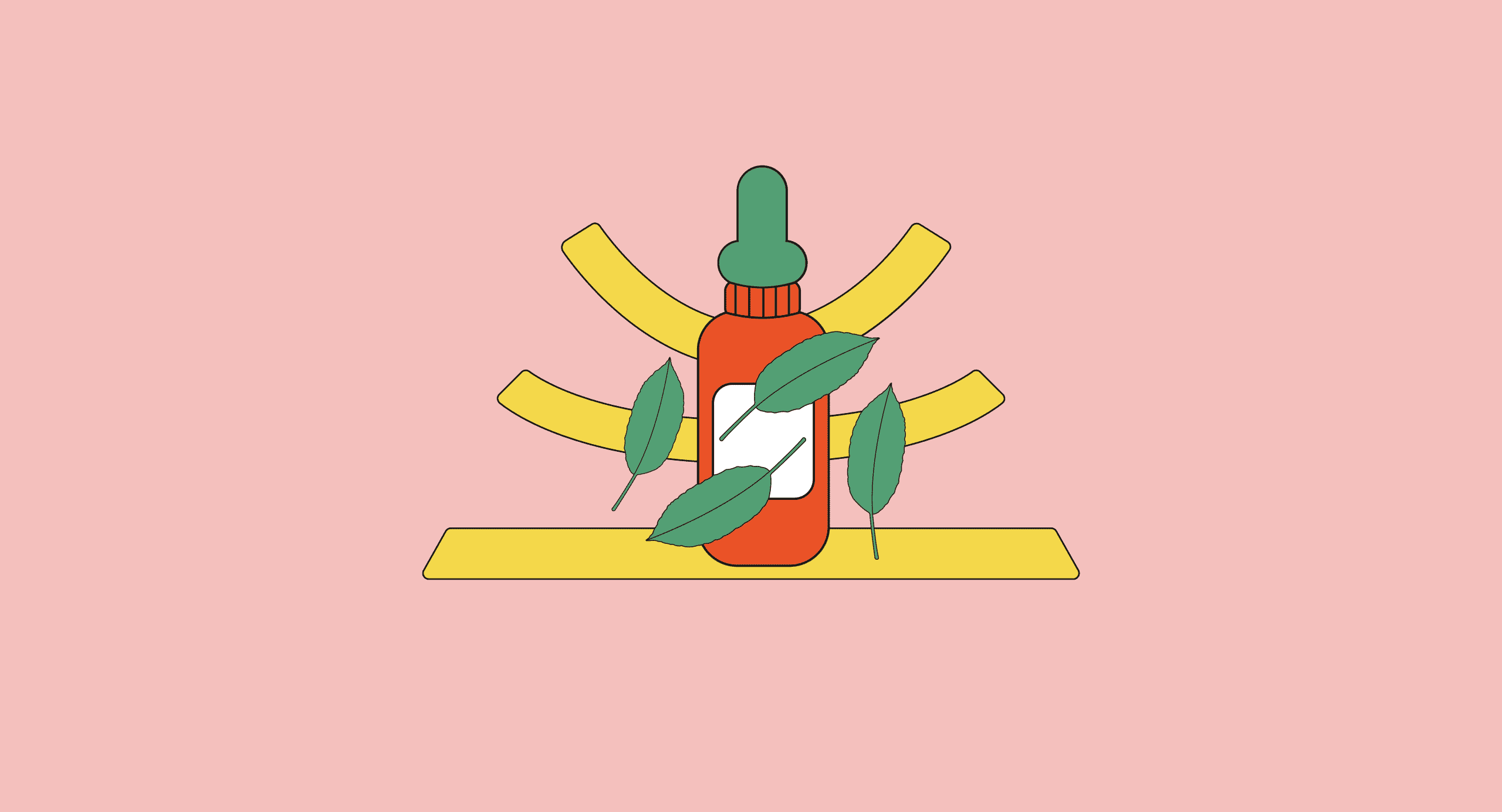What Is a Tincture?
Tinctures are alcohol-based extracts from the leaves, roots, bark, flowers, or any other plant part. A kratom tincture is made with the leaves of the Mitragyna speciosa plant.
Tinctures have been a popular form of medicine for centuries, if not millennia. We’ll never know exactly, but they’re described in medical texts as old as the Al-Qanuun Fi at-Tibb, first written in 1025.
In more recent years — the middle ages, to be exact — the alchemists of Europe finely tuned the art of making tinctures and employed some of the terms we still use today. Strong alcohol was first referred to as spirits around this time due to its ability to draw out the plant’s “spirit” or essence.
As scientists now understand it, the plant’s spirit consists of the volatile oils, organic phytochemicals, and alkaloids contained within the plant. In other words, all of the various compounds give the plant its unique properties.
Alcohol doesn’t extract all phytochemicals; some are extracted better into water. However, most herbalists agree that alcohol is versatile and useful for creating herbal extracts from most plants.
Fortunately for us, all of kratom’s identified alkaloids are soluble in ethanol.
How to Make a Kratom Tincture
There are many ways to make a tincture, but professional herbalists generally follow a standard procedure. The Western herbalist standard provides ratios so herbalists and tincture makers can determine how much plant matter and alcohol to use.
The process and plant you use will require different amounts of alcohol (and cause a fluctuation in potency). For example, dried plants contain little moisture and need lower-proof alcohol.
On the other hand, fresh herbs still contain significant amounts of moisture, which release into the tincture. Fresh herbs require the use of higher-proof alcohol to prevent the alcohol from becoming overly diluted.
To clarify, imagine you’re using fresh kratom leaves that are 50% water by weight, and you try to extract them using 40% vodka. The liquid will result in only a 20% alcohol solution — not enough to pull much of anything.
That said, it’s important to note that kratom is not present in most western Materia Medica handbooks. The Materia Medica is a collection of information describing the herbal actions of many different plants — there is no official standard for kratom tinctures in Western herbalism.
In its simplest form, a kratom tincture can be made by covering kratom powder with alcohol, letting it sit for a couple of weeks, and then straining it.
Terms to Know
You’ll need to know only a few terms: marc, macerate, and menstruum.
- Marc: the plant matter that’s processed and soaked in your menstruum.
- Menstruum: the solvent or liquid used to soak your marc (in this case, alcohol).
- Maceration: the process in which your marc is soaked in the menstruum, slowly releasing its organic compounds into the tincture.
Making Kratom Tinctures 101
Unless you live in Southeast Asia, chances are you’re most likely going to be working with dried kratom, either in powder or crushed leaf form. A crushed kratom leaf is ideal for making tinctures, but the powder will work too.
If you have access to fresh kratom — even better, this is ideal for making tinctures.
The standard for making tinctures with dried herbs is a 1:5 ratio. Dried herbs have no moisture and therefore work fine with lower-strength alcohol — 40% spirits are fine.
If you’re using fresh kratom, the only difference is that you should opt for a 1:2 ratio instead.
Step 1: Weigh Your Kratom
Tinctures use ratios to determine the amount of alcohol or kratom you should use, so first, you need to take stock of what you have available.
If you’re going to make a standard 1:5 tincture, you’ll need five times as much alcohol (in mL) as you have for kratom (in grams).
For example, 50 g of dried kratom would require 250 mL of alcohol. 100 g of kratom would require 500 mL of alcohol — and so on.
Weight your kratom with a food scale — don’t rely on using tablespoons or cups — these aren’t going to be accurate enough.
Step 2: Prepare the Kratom
Next, add your kratom into a jar with lots of room leftover for the alcohol. For 50 grams, you can use a standard 1-pint glass mason jar.
Now measure and add the alcohol and fill it into the jar.
The kratom should be completely covered by the alcohol — it doesn’t need to be much coverage, but you don’t want any kratom sticking up out of the fluid. If you need to add a little more alcohol to achieve this, do it.
Step 3: Let it Soak
Once your kratom and alcohol are mixed together, let them soak for at least two weeks. Mix it up by shaking or flipping the jar upside down at least once daily to help with the extraction.
Step 4: Strain The Kratom
Once the mix is complete, the final step is to remove all the plant material. You can do this by pouring the mixture through a sieve or filter.
Cotton or muslin filters work great for this, but you can also use cheesecloth or an old cotton T-shirt.
Make sure to squeeze out every last drop of liquid you can before throwing the remaining plant material away.
You should end up with a dark green liquid with a strong bitter taste. Fill this into a dripper bottle or jar, and you’re ready to use it!
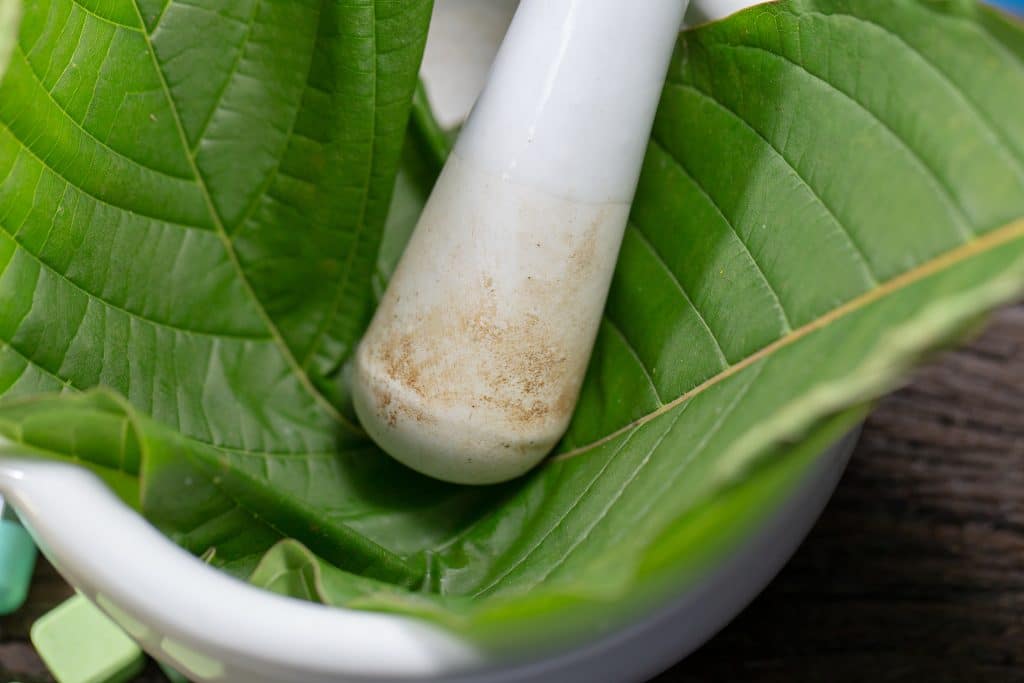
You Can Add Other Herbs to Your Kratom Tincture Too
Mixing other herbs into your kratom tincture can provide far more benefits. You can add them during the tincture-making phase or make tinctures of each herb and mix it with the final tincture — both methods work just as well.
Here are a few herbs you can use to increase the therapeutic effects of kratom.
For Pain & Inflammation
Kratom reduces pain primarily because of its ability to activate the opioid system. This symptomatic approach doesn’t target painful conditions at the root, which is often inflammation. Thus, mixing anti-inflammatory or analgesic herbs could improve your experience.
1. Fireweed
Many people have used this strong systemic anti-inflammatory to replace traditional NSAIDs, like ibuprofen.
2. Calendula
Calendula is a soothing herb that can help fight inflammation and reduce pain and discomfort.
3. Devil’s Club
Use this relatively rare herb only when harvested fresh. If you’re lucky enough to live in an area where it grows, you can enjoy its potent analgesic and anti-inflammatory effects.
4. Corydalis
This is a common traditional Chinese medicine herb used to alleviate chronic inflammatory or autoimmune-related pain.
5. CBD & Hemp
One of the most popular natural painkillers these days is the non-psychoactive hemp or CBD extracts. You can easily add alcohol-based tinctures to kratom tinctures or make a hemp tincture by following the same method outlined above for kratom.
For Insomnia & Improved Sleep
Kratom is sedative when used in higher doses. It can be used to help users fall asleep more quickly and achieve a deeper, more restorative sleep throughout the night.
Here are some herbs that can help boost the sleep-supportive benefits of kratom.
1. Valerian Root
This herb is commonly used for sleep but is antispasmodic and doubles as an anxiety fighter. Combining valerian root with kratom can produce strong sedation.
2. Chamomile
This herb is most popular as an evening tea because of its ability to promote relaxation, but it also has a powerful ability to calm the nervous system and soothe digestion.
For Anxiety & Depression
On its own, kratom is an excellent anxiolytic and antidepressant — but it works even better when used in combination with other anxiolytic herbs and supplements.
1. Skullcap
Commonly used for fighting anxiety and promoting relaxation, it can create a profound sense of well-being and sleepiness when used with kratom.
2. Passionflower
This herb is another great anxiolytic herb. It works on the GABA receptors, producing an anti-anxiety effect that is different yet complementary to kratom.
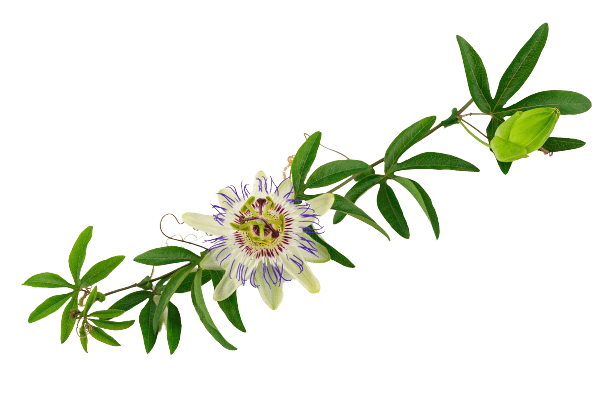
3. Milky Oat
Milky Oat is a very soothing herbal remedy that relaxes the nervous system and helps to relieve tension. It can alleviate anxiety on its own and works even better with kratom.
Herbs to Offset Kratom Side Effects
It would be folly to pretend that kratom doesn’t cause any side effects. The following herbs can help reduce some of kratom’s side effects.
1. Pine Pollen
This is, surprisingly, nature’s most dense (non-animal) source of testosterone. Since kratom (may) reduce testosterone levels over time, supplementing with pine pollen can help offset this potential side effect.
2. Ashwagandha
Ashwagandha is an adaptogen herb that can have both stimulating and relaxing benefits. It’s also known for restoring libido and balancing testosterone levels, two things that kratom can impair in the long term.
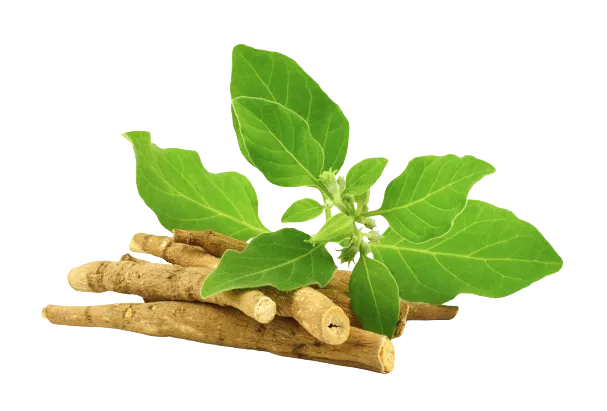
3. Dandelion Root
This mild laxative can help keep you regular when using kratom. It’s also a digestive bitter that stimulates healthy digestion.
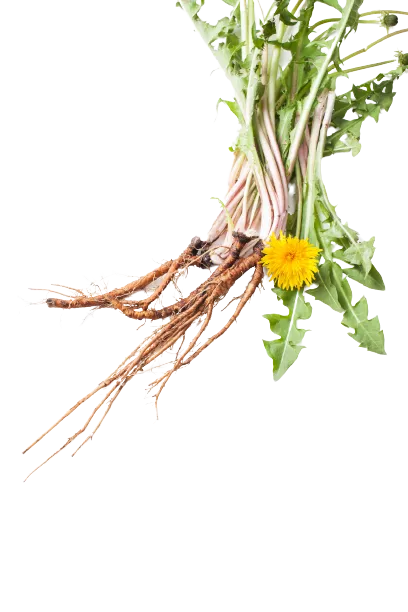
4. Peppermint
Peppermint is a great addition to kratom tinctures to improve the taste. The active ingredient, menthol, does an excellent job at cutting back on the naturally bitter flavor of kratom tinctures.
Additionally, peppermint may help alleviate some of the digestion-related side effects of kratom.
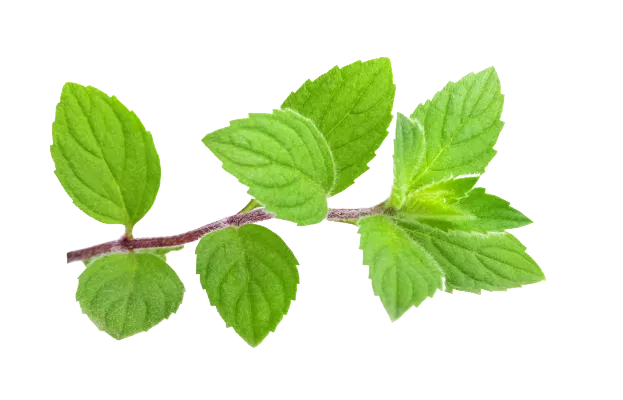
5. Milk Thistle
Milk thistle (Silybum marianum) is a powerful liver and digestive tonic. This herb is widely used to eliminate digestive discomfort that often accompanies kratom use. It’s a great herb to add to kratom tinctures to make them more effective.
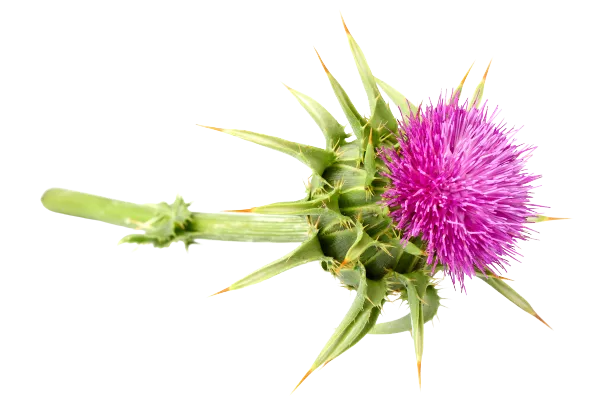
6. Artichoke Leaf Extract
The active ingredient in artichoke (Cynara scolymus) is a compound called cynarin — which stimulates bile production in the liver to boost digestion and eliminate irritating or pro-inflammatory compounds in the digestive tract.
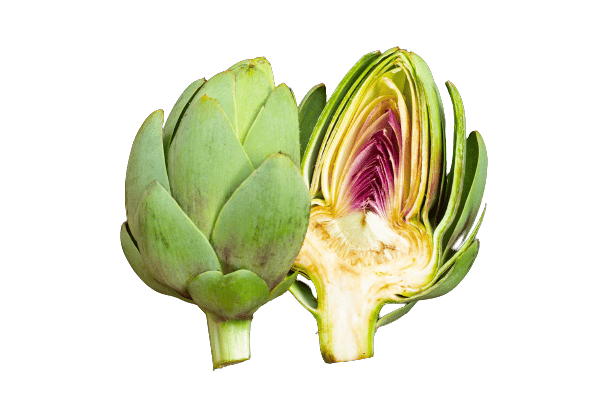
How to Increase the Potency of Kratom Tinctures
Because the required dose of kratom is fairly high compared to other herbal substances, it’s obviously in any consumer’s interest to maximize the potency of their kratom tinctures.
Here are a few ways you can make your kratom tinctures even stronger.
1. Reusing the Menstruum
One of the ways that people attempt to increase the potency of kratom tinctures is by reusing the alcohol they made their first tincture with. Once they’ve strained the marc out of the menstruum, they simply add a fresh batch of plant matter to it, thus making a 2:1 tincture.
This means you now have a concentrated extract. There are two parts kratom for every 1 part alcohol.
Unfortunately, doing this causes some of the alkaloids to actually absorb back into the new plant matter. The absorption power of the alcohol seems to become more limited as you continue to soak separate batches of marc.
This method can be used to make extremely potent kratom tinctures but will inevitably cause some wastage.
2. Reducing & Adding More Tincture
A third option is to make a 1:1 or 1:5 kratom tincture as normal — followed by a process of evaporating the alcohol to increase the concentration of the mixture.
To do this, pour your tincture into a pot and place it on very low heat. You will need to leave this on for several hours so the alcohol can evaporate from the brew. Once you’ve reduced the volume by about half, turn off the heat and let it cool.
You’ve effectively gone from a 1:5 tincture to a 1:2 tincture without wasting any kratom leaf.
Always do this in a well-ventilated area. Alcohol will evaporate into the air, which can then be inhaled or cause a fire risk. Never do this in a small or enclosed space or kitchen or near any open flames.
What Are the Benefits of Kratom Tinctures?
By now, you probably think it sounds like a bit of a hassle to make a tincture. Why would you bother making a tincture when you could just use the plant on its own?
There are lots of reasons that people use tinctures. Not only are they convenient and easy to transport, but they’re also more stable and can provide you with strong doses of plant medicine in a simple way.
Here are some of the benefits of using a kratom tincture compared to using regular powder.
1. Portability
Kratom tinctures are portable and easy to use. Making a few different kratom tinctures and carrying them with you might be easier than lugging around several bags of kratom.
2. Discrete
Kratom tinctures are discreet. It’s a heck of a lot easier to find the time and space to take a few drops out of a tincture bottle than it is to go and make a cup of kratom tea or do a toss and wash. Its ease of use is one of the biggest pros of taking a kratom tincture.
3. Better Dosage Control
You can adjust the potency of your own tinctures. You don’t necessarily have to follow the standard herbal ratios when making them at home.
Because most people require at least a couple of grams of kratom to feel much effect, it’s encouraged to make tinctures that are somewhat stronger than the standard ratio for fresh/dry herbs, so you don’t have to consume multiple droppers-full.
4. Longer Shelf Life
Tinctures have a long shelf life. Many people don’t realize how quickly their kratom expires when it’s sitting in a bag; raw plant material degrades fairly quickly when exposed to oxygen and light.
Once you extract the active compounds from the kratom and put them into a tincture, you can expect its shelf life to increase by a year or two.
5. Fewer Side Effects
You can eliminate some of kratom’s undesirable side effects by switching to using a tincture.
Kratom can cause digestive upset in a lot of people — possibly a result of fibrous plant material struggling through your digestive tract. Using a tincture helps eliminate this and can significantly improve your experience with kratom.
6. More Bang For Your Buck
You can get more value from your kratom by using a tincture simply because it allows you to use sublingual administration (putting the drops under your tongue). This form of administering causes effects to come on much quicker and stronger.
Taking it sublingually allows the alkaloids to absorb directly into your bloodstream instead of first processing through the digestive tract. The result is faster, more effective, and less taxing on your digestive system.
7. You Can Make Personalized Blends
You can make your own medicinal blends to accentuate the benefits of kratom. When making tinctures, you can increase the therapeutic value by including other herbs with similar actions.
For example, if you use kratom for pain, you can include other herbs that will help. Or, people using it as a sleep aid can add in herbs that promote relaxation.
8. DIY Kratom Tinctures Are Cheaper
One of the main benefits of making your own tinctures is that you can save yourself a lot of money. Keep your eyes open for deals on kratom powder throughout the year, and buy it whenever you get a chance. You can then turn this into tinctures to lengthen the shelf-life.
If you follow this technique, you can ensure you’re only buying kratom when it’s on sale.
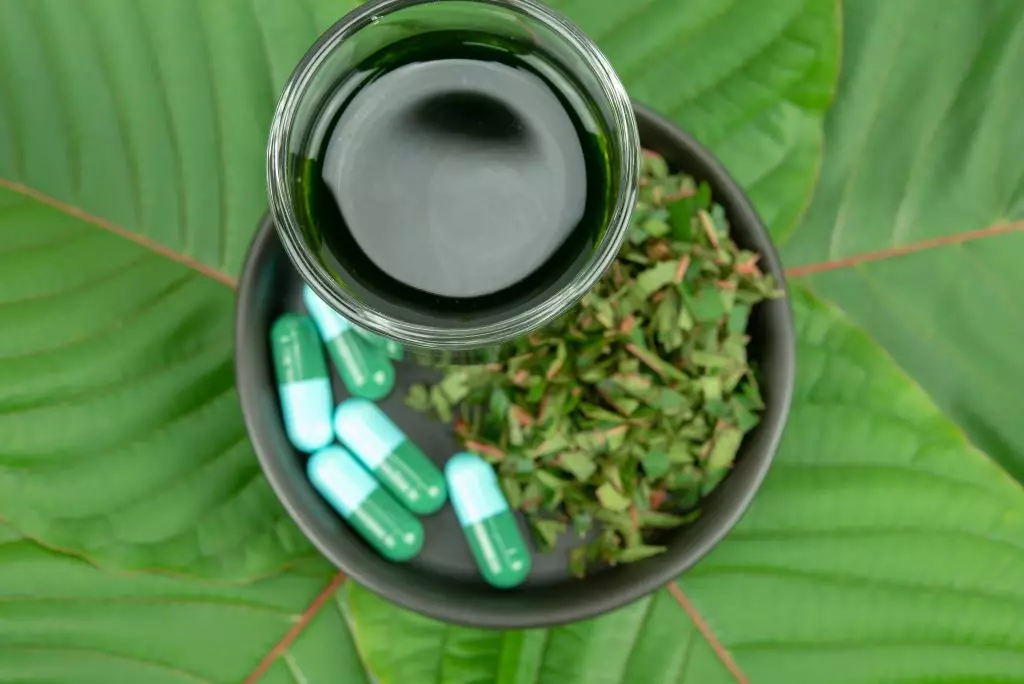
Drawbacks of Kratom Tinctures
There aren’t many drawbacks to using kratom tinctures, but there are a few. No method of administration is perfect. Here are a few issues that some people might face when using kratom tinctures.
1. Risk of Triggering a Relapse
Tinctures are alcohol-based, which might be triggering for an alcoholic. If you’ve struggled with alcoholism, then the taste or smell of a tincture can provoke a relapse.
If this is an issue for you, consider using vegetable glycerine instead of alcohol.
Vegetable glycerine is non-alcoholic and offers all the same benefits as alcohol for making tinctures. The benefit is that it tastes much better, but it isn’t as effective as a solvent (meaning your tinctures will be a little bit weaker when made with vegetable glycerine rather than alcohol).
2. You May Need a Few Doses
You have to use a relatively large amount of tincture, at least compared to other herbal preparations. However, compared to the typical method of consuming kratom, this may still be considered a pro.
It depends on how much experience you have using tinctures and kratom.
Many people turn to kratom tinctures because it’s an appealing alternative to swallowing large amounts of powder. For these folks, the switch won’t seem to be overkill at all.
However, if you’re new to kratom but are familiar with using tinctures, then a kratom tincture might seem excessive.
3. It Takes Longer to Kick in
One of the reasons that people don’t like working with tinctures is because they don’t have the patience to make them. Tinctures generally require advanced preparation since you have to soak the kratom in alcohol for a couple of weeks before it will be ready.
There are some ways to speed up the process of tincture making that we’ll discuss below, but they generally require more equipment and specialization.
Kratom Tincture Dosage
The dosage depends on the potency of the tincture, which can vary immensely.
Unfortunately, since most people’s dose of kratom is at least several grams, the amount needed is large compared to other tinctures.
Estimated Dose of Kratom Tinctures Based on Potency
| 2:1 Tincture | 1:1 Tincture | 1:3 Tincture | 1:5 Tincture | |
| 1 Gram Equivalent | 0.5 mL | 1 mL | 3 mL | 5 mL |
| 3 Gram Equivalent | 1.5 mL | 3 mL | 9 mL | 15 mL |
| 5 Gram Equivalent | 2.5 mL | 5 mL | 15 mL | 25 mL |
| 8 Gram Equivalent | 4 mL | 8 mL | 24 mL | 40 mL |
| 12 Gram Equivalent | 6 mL | 12 mL | 36 mL | 60 mL |
As you can see from the chart above, anything more than the 1:1 tincture is going to require a large amount of tincture to get the desired dose. A standard shot contains about 28 mL, so for an 8-gram dose with a 1:3 tincture, you’d need about one full shot of tincture (yuck).
It’s worth the time and effort to make a concentrated 2:1 tincture if possible, which would only require about 4 mL for the same 8-gram equivalent dose.
How to Use Kratom Tinctures
Using a kratom tincture is about as easy as it gets, and it’s certainly easier than trying to deal with raw kratom powder. Simply draw some into the bottle’s dropper and then squeeze it into your mouth.
Then, either swallow it immediately or use it sublingually. Sublingual use is better since you’ll get much more value out of your kratom.
Most droppers hold exactly 1 mL of fluid. You can also count the number of drops — there are generally about 30 drops in 1 mL.
How Long Do Tinctures Take To Kick In?
Tinctures will kick in about 30–60 minutes after taking them. If you hold it under your tongue before you swallow, this time can be cut in half.
When you take kratom orally, tinctured or not, it must push its way through the obstacle course of your digestion before it can provide you with any effects.
First, digestive fluids break down the kratom; then it’s transported to the liver for further processing before passing into the blood and brain, where it can provide its pleasant benefits.
This usually takes around half an hour; during this time, a good chunk of the alkaloids are broken down or destroyed. Sublingual absorption bypasses this whole process, allowing more of the alkaloids to be absorbed straight into your bloodstream.
While it is technically possible to take kratom powder sublingually, it’s less than ideal. Kratom is extremely astringent and dries out moist tissues on contact, including those in the mouth.
Even using a kratom tincture is unpleasant for some; attempting to use raw kratom powder sublingually is like sucking up dry dust on a hot day.
If you choose to take the tincture sublingually, remember that the alcohol may burn a little bit. Also, the large amount of tincture required might be a bit much to take entirely sublingually.
Kratom Tincture Storage & Shelf Life
As long as your tincture is preserved in strong alcohol of at least 40% (after accounting for any dilution or the addition of extra menstruum), it should keep for a couple of years.
Tinctures won’t rot or go bad, but by the third or fourth year in storage, they’ll start to lose their potency every year.
Usually, by year 10, the tincture will have lost around half of its potency. If stored incorrectly, they will lose potency even quicker.
It’s always best to store herbs in a cool, dark place.
Related: How to Store Kratom?
Using Kratom Tinctures to Overcome Addiction
Using a kratom tincture presents people with a valuable tool for overcoming kratom addiction.
Since kratom tinctures can easily allow you to measure specific dosages, you can administer exact amounts of kratom regularly.
Many people who use kratom don’t actually realize that their daily dosages are increasing. Many people measure their kratom loosely, such as “a spoonful” or “half a teaspoon,” never accounting for the tremendous variability depending on how loaded the spoon is or how packed the powder is.
A regular teaspoon can easily hold between 3-7 grams. That means that someone could gradually transition from taking several 3-gram teaspoons a day to taking several 7-gram teaspoons without even noticing.
Unfortunately, this is one of the ways that people can unintentionally become physically dependent on kratom. They think their dosage remains consistent, but it’s actually increasing, and so is their body’s dependence on kratom.
Switching to a tincture allows you the chance to begin weaning yourself off kratom. Weaning — gradually reducing the amount of an addictive substance — is very difficult to do without some way to measure the amount that you’re taking.
If you decrease the amount of tincture that you take every few days, you’ll be able to reduce your overall usage to nearly nothing in a period of a few weeks or months.
Start by finding out how much your regular dose is. Then, reduce your dosage by half a milliliter every three or four days. After a few weeks, your tolerance will have dropped drastically, and you should be able to stop using entirely with minimal withdrawal symptoms.
If you do ever find yourself in withdrawal, kratom tinctures can also provide quick relief. If you take it sublingually, you can zap withdrawal symptoms right away.
Kratom Tincture Precautions & Tips
These tips and tricks will ensure that you’re making the best possible tincture.
- Most tinctures are made using clear alcohol. However, many herbalists recommend using rum for bitter herbs. Rum has a richer flavor that can help to mask the unpleasant and intense taste of kratom.
- The finer the grind or cut of your herbal product, the more potent your tincture will be. The more surface area the alcohol has access to, the more alkaloids can be withdrawn.
- Your tincture can only be as good as the quality of your plant material. The fresher the kratom you use, the better.
- Tinctures can be an excellent way to extract the active components from old kratom that you’ve got sitting around. Instead of forcing down spoonfuls of two-year-old kratom, consider tincturing it.
- If you’re making a large batch of tinctures and planning on using multiple ingredients, it’s best to make the tinctures separately and then mix them afterward.
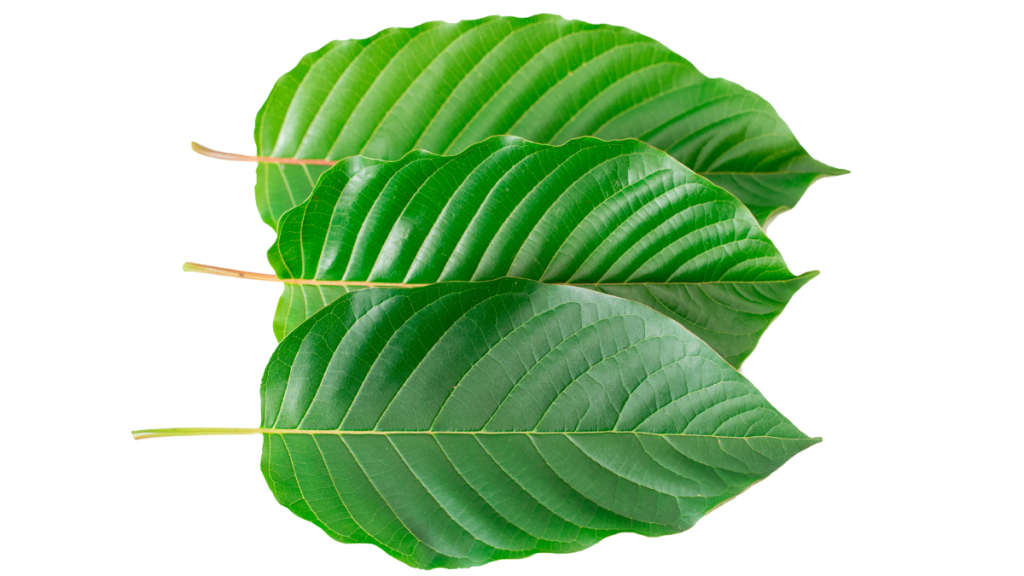
Final Thoughts on Kratom Tinctures
Kratom tinctures are one of many ways to consume the herbal supplement, but there’s certainly a reason they aren’t as popular as they could be.
It takes time and effort to produce tinctures, and the fact that kratom users usually consume at least several grams per dose renders the standard herbal ratios somewhat ineffective.
That said, kratom tinctures are fast-acting and long-lasting and, when combined with other herbal medicines, can provide more benefits than on their own. Anyone willing to innovate and work with kratom to create their own tinctures may find themselves pleasantly surprised.

